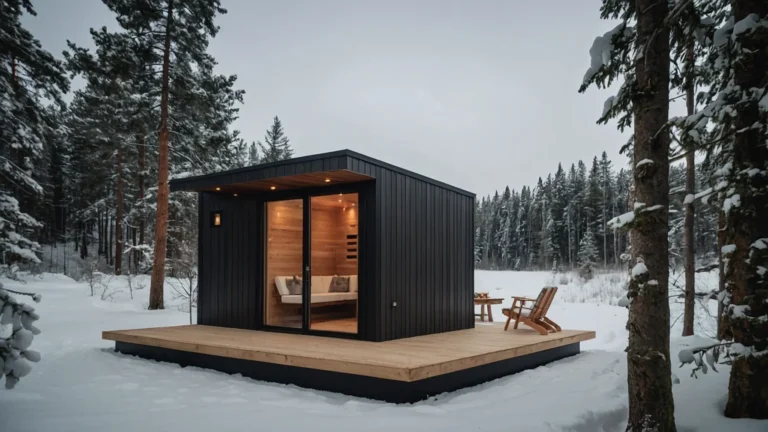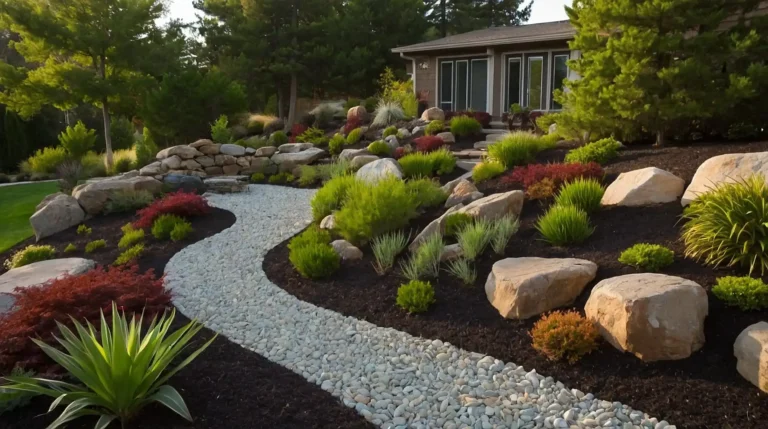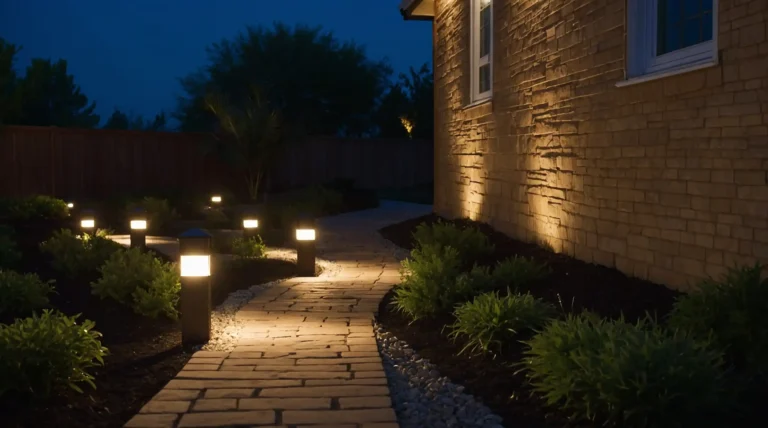27 Creative Garden Edging Ideas for Your Yard
Garden edging transforms ordinary landscapes into polished, professional-looking outdoor spaces.
You’ll create clean boundaries that define planting areas while preventing grass from invading flower beds.
These creative solutions work for every budget and skill level imaginable.
You’ll discover options that enhance your garden’s beauty while solving practical maintenance challenges.
Get ready to add the finishing touches that make your landscape look intentionally designed and expertly maintained.
1: Natural Stone Border
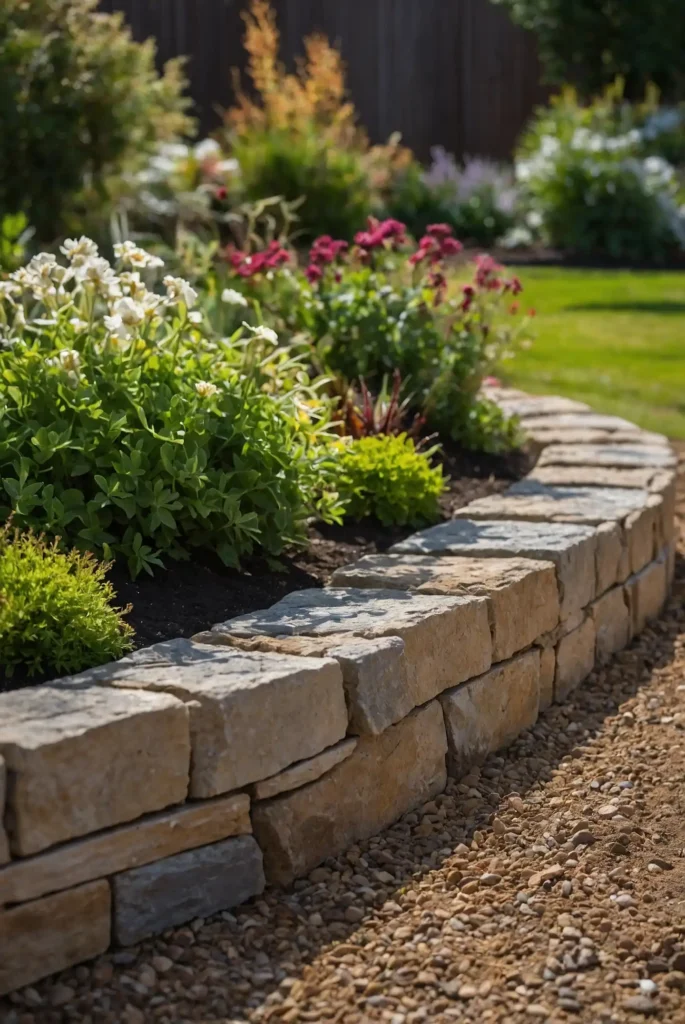
Install natural fieldstone or river rocks to create organic-looking edges that complement any landscape style.
You’ll achieve timeless beauty that weathers gracefully while requiring minimal maintenance over time.
These stones work perfectly for curved beds and informal garden designs throughout all seasons.
Your natural edging blends seamlessly with existing landscape features and plant selections.
You can source stones locally or choose from various sizes to match your specific design preferences.
2: Brick Soldier Course
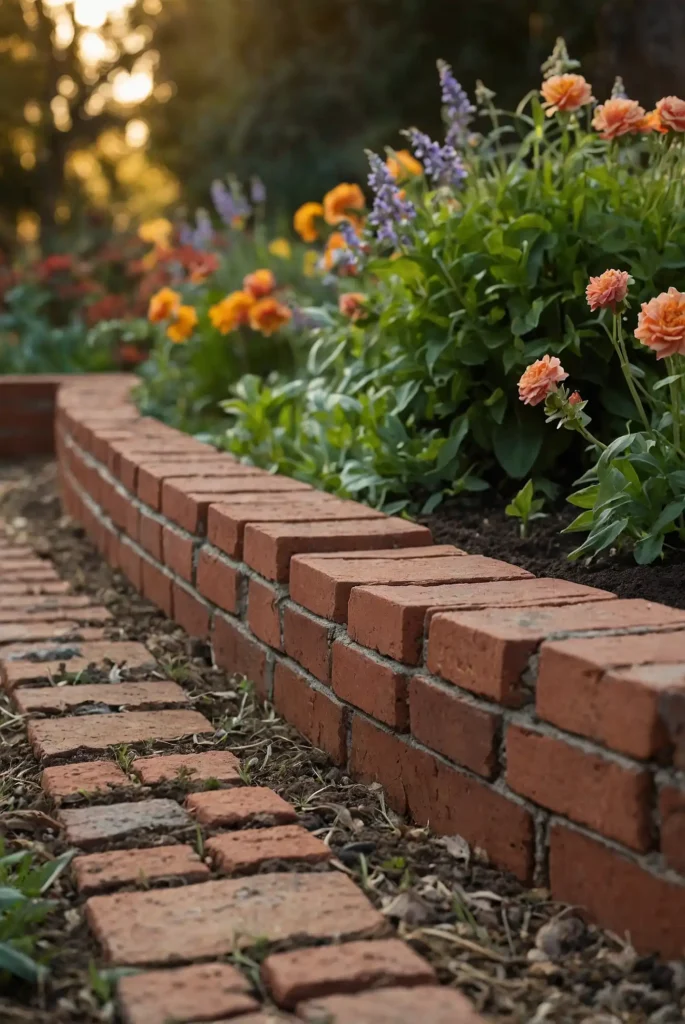
Set bricks vertically in a soldier course pattern for classic, formal garden boundaries.
You’ll create crisp lines that complement traditional home architecture while adding historical charm to your landscape.
This technique provides excellent height definition between lawn and planting areas effectively.
Your brick edging creates permanent boundaries that maintain their appearance for decades with proper installation.
You can use new bricks or reclaimed materials for different aesthetic effects and budget considerations.
3: Recycled Bottle Borders
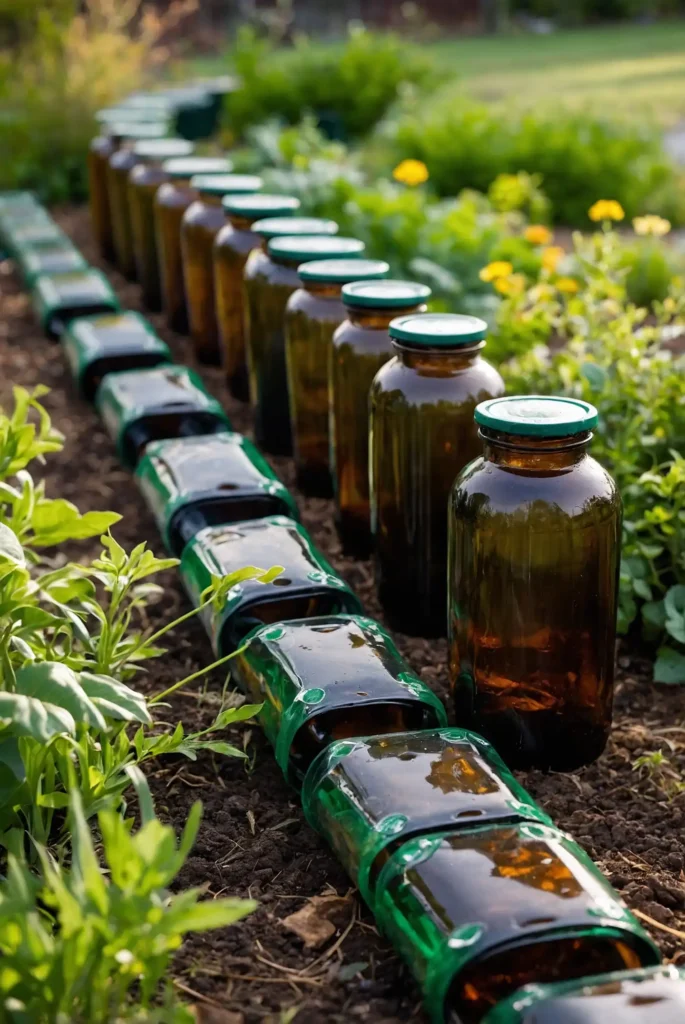
Bury glass bottles neck-down to create colorful, eco-friendly edging that catches sunlight beautifully.
You’ll repurpose waste materials while adding unique personality to your garden design.
This creative approach works especially well for informal gardens and children’s play areas.
Your bottle edging creates interesting light effects while solving disposal challenges for collected bottles.
You can mix colors or use uniform bottles depending on your desired visual impact.
4: Living Plant Edging
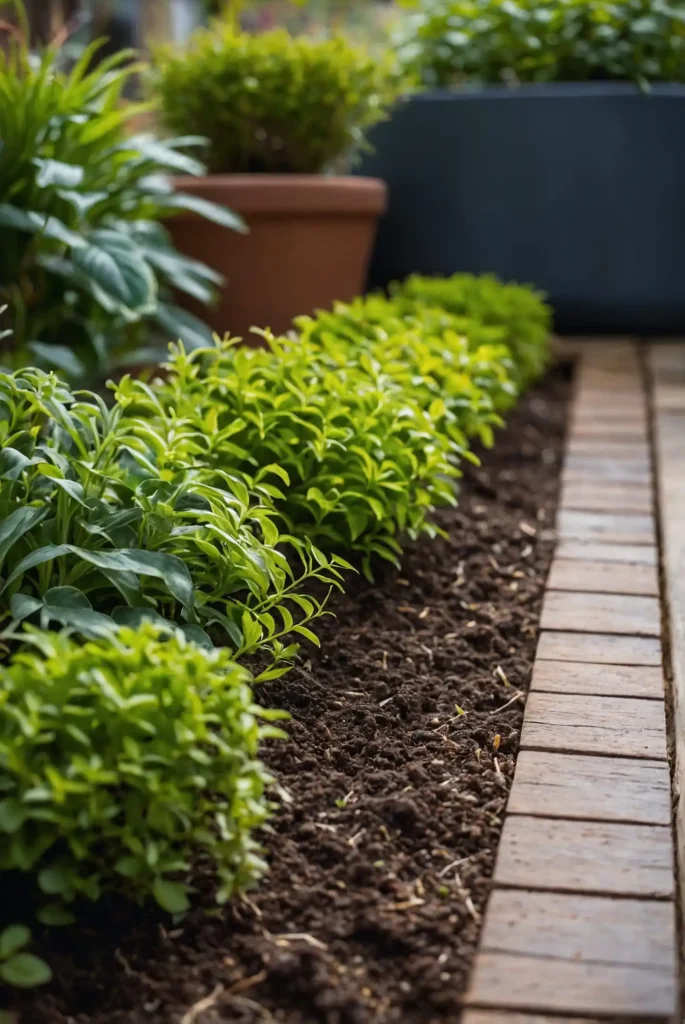
Plant low-growing perennials like boxwood, lavender, or ornamental grasses to form natural living borders.
You’ll create soft boundaries that change seasonally while providing additional color and texture.
These plant edges require regular trimming but offer flexibility and organic beauty.
Your living edging provides habitat for beneficial insects while contributing to your garden’s overall ecosystem.
You can choose plants that complement your existing color scheme and maintenance preferences.
5: Steel Metal Strips
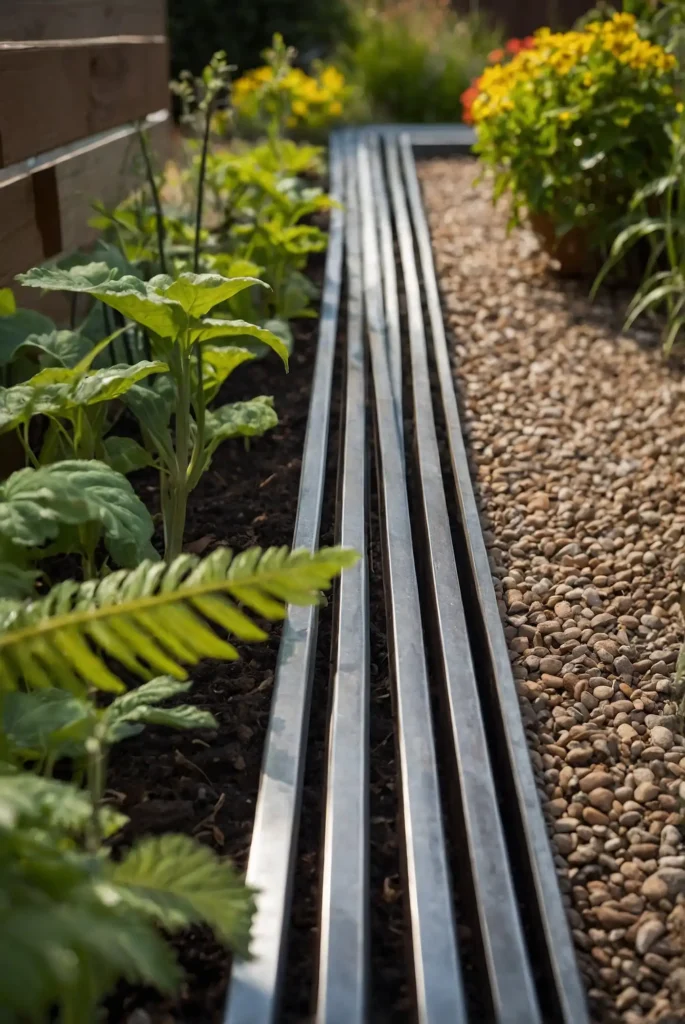
Install sleek metal edging for contemporary gardens that require clean, minimalist boundaries.
You’ll achieve sharp definition that works perfectly with modern architecture and geometric landscape designs.
This professional-grade solution provides excellent root barriers while maintaining nearly invisible profiles.
Your metal edging creates precise lines that enhance formal garden layouts and structured planting schemes.
You can choose from various heights and finishes to match your specific design requirements.
6: Railroad Tie Retaining
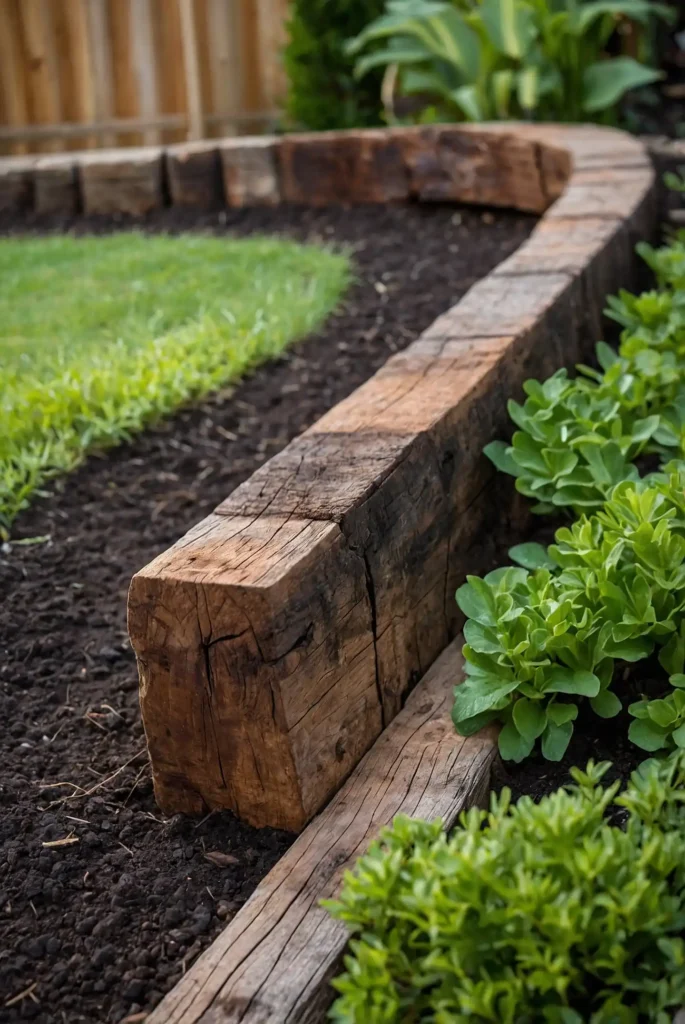
Use treated railroad ties for substantial edging that handles slopes and elevation changes effectively.
You’ll create rustic boundaries that provide both edging and modest retaining wall functions.
These heavy timbers work perfectly for informal gardens and cottage-style landscapes throughout all seasons.
Your railroad tie edging adds substantial visual weight while solving grade-related challenges efficiently.
You can stack ties for higher retention or use singles for simple boundary definition.
7: Decorative Concrete Blocks
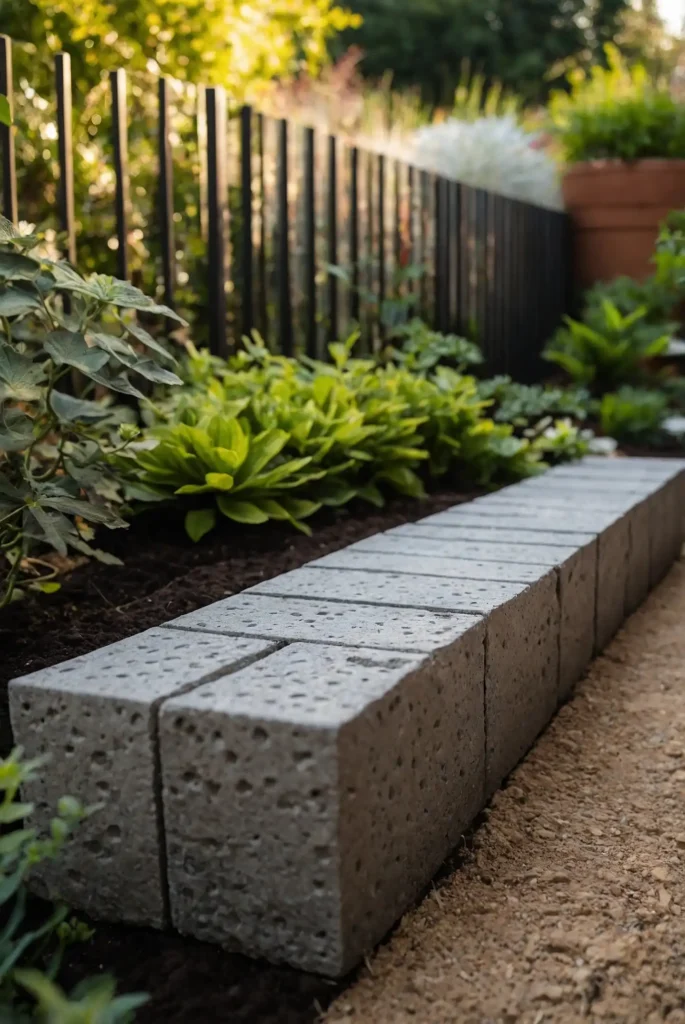
Choose textured or colored concrete blocks to create affordable edging with architectural appeal.
You’ll achieve consistent height and spacing while maintaining budget-friendly installation costs.
These versatile blocks work well for both curved and straight garden edges effectively.
Your concrete edging provides permanent solutions that resist weather damage and shifting over time.
You can paint blocks or choose from various textures to match your landscape design preferences.
8: Woven Willow Barriers

Install flexible willow branches woven between stakes for charming, cottage-garden style edging.
You’ll create organic boundaries that add rustic character while remaining completely biodegradable and environmentally friendly.
This traditional technique works beautifully for herb gardens and informal planting areas.
Your willow edging provides gentle definition while allowing for natural garden expansion and seasonal changes.
You can harvest willow branches locally or purchase them from specialty garden suppliers.
9: Flagstone Flat Layout
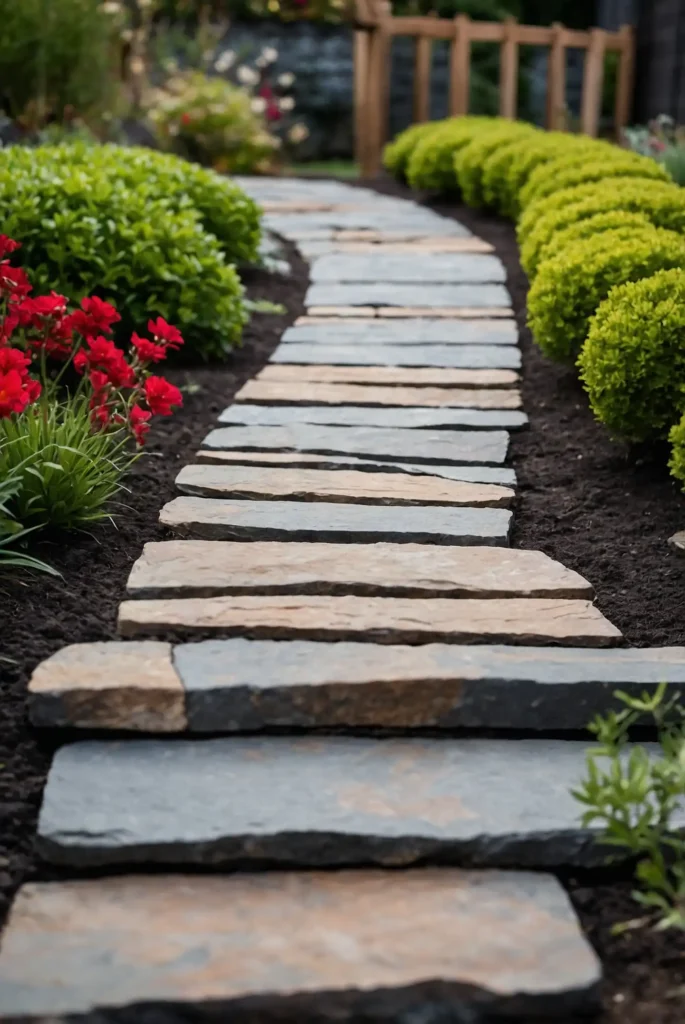
Lay flat flagstones end-to-end to create wide, stable edging that doubles as walking paths.
You’ll establish clear boundaries while providing functional access for garden maintenance and plant care.
This approach works exceptionally well for large perennial borders and vegetable garden areas.
Your flagstone edging creates substantial presence while offering practical benefits for regular garden work.
You can choose from various stone types and sizes to match your regional preferences.
10: Bamboo Fence Sections

Install bamboo screening cut into shorter sections for exotic, tropical-style garden edging.
You’ll add vertical interest while creating sustainable boundaries that complement Asian-inspired landscape designs.
This eco-friendly option provides excellent height variation and natural texture throughout growing seasons.
Your bamboo edging creates privacy screening while defining planting areas with organic appeal.
You can treat bamboo for longevity or replace sections as they age naturally.
11: Mosaic Tile Borders
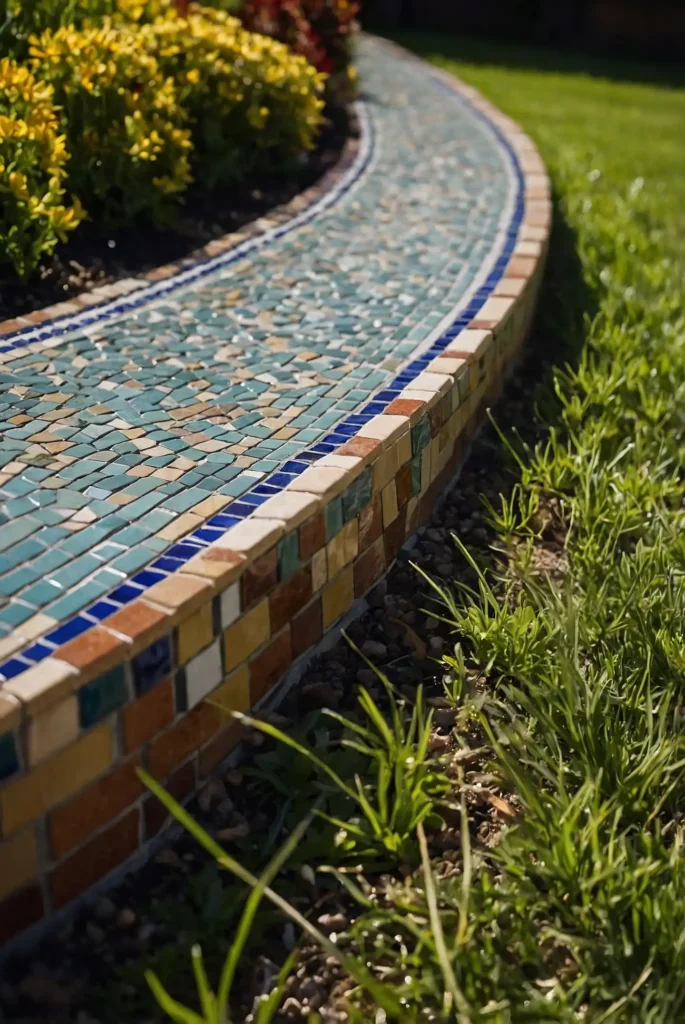
Create custom mosaic edging using broken tiles, pottery, or glass for artistic garden boundaries.
You’ll design unique patterns that reflect your personal style while adding color and visual interest.
This creative approach transforms ordinary edging into functional garden art that sparks conversations.
Your mosaic borders become focal points that enhance your landscape’s overall artistic appeal significantly.
You can incorporate found materials or purchase supplies to achieve specific color schemes.
12: Log and Branch Edging

Use fallen branches or small logs to create natural woodland-style boundaries for informal gardens.
You’ll add organic texture while recycling materials from your own property or local sources.
This approach works perfectly for native plant gardens and naturalized landscape areas.
Your log edging provides habitat for beneficial insects while decomposing slowly to enrich soil.
You can arrange logs randomly or create patterns depending on your desired level of formality.
13: Plastic Edging Systems

Install flexible plastic edging for invisible boundaries that prevent grass invasion without visual distraction.
You’ll create effective barriers while maintaining clean sight lines and natural garden flow.
This practical solution works well when you want plant materials to be the primary focus.
Your plastic edging provides excellent root control while remaining virtually undetectable from normal viewing distances.
You can choose from various colors to blend with soil or mulch materials effectively.
14: Rope and Post Borders
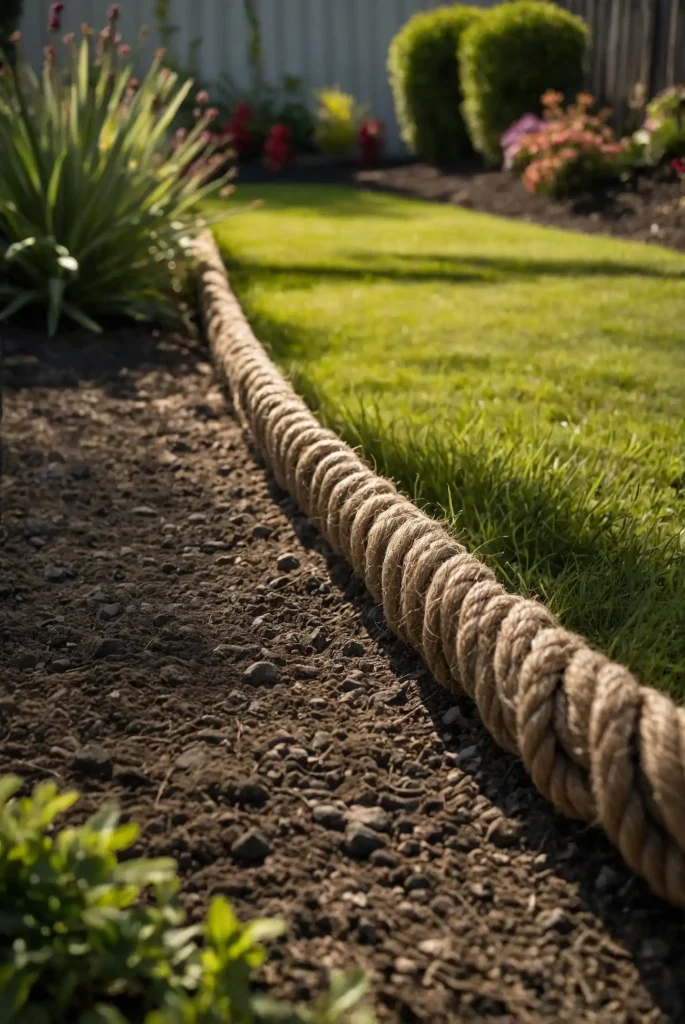
String natural rope between wooden posts to create casual, beach-style garden edging.
You’ll establish flexible boundaries that work perfectly for informal cottage gardens and coastal landscape themes.
This approachable technique provides gentle definition without rigid barriers or permanent installation requirements.
Your rope edging creates charming boundaries while allowing easy reconfiguration as gardens evolve.
You can choose rope materials and post styles that complement your home’s architectural character.
15: Gabion Wire Baskets

Fill wire gabion baskets with stones or decorative materials for industrial-chic garden edging.
You’ll create substantial boundaries that provide excellent drainage while adding contemporary architectural interest.
This modern approach works beautifully with minimalist landscapes and urban garden designs.
Your gabion edging creates strong visual statements while offering practical benefits for drainage management.
You can fill baskets with various materials to achieve different textures and color effects.
16: Terracotta Pot Edging
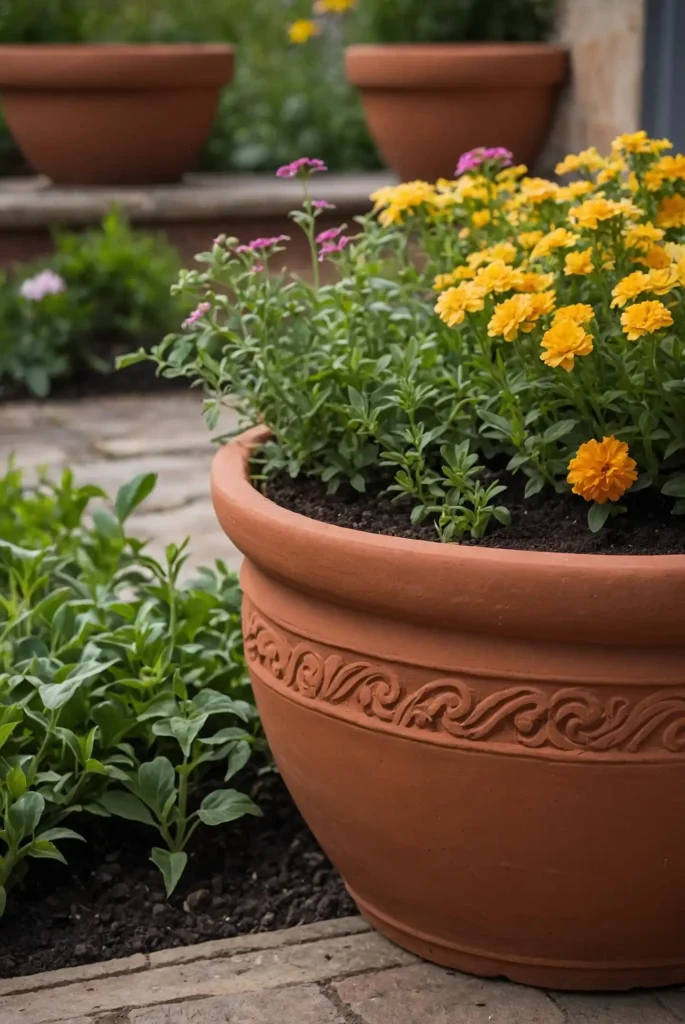
Bury terracotta pots partially to create curved, Mediterranean-style garden boundaries with rustic charm.
You’ll add warm earth tones while establishing clear planting area definition.
This budget-friendly approach works especially well for herb gardens and informal cottage landscapes.
Your pot edging provides excellent drainage while adding textural interest throughout all growing seasons.
You can use matching pots for uniformity or mix sizes for more organic, varied appearances.
17: Concrete Poured Borders
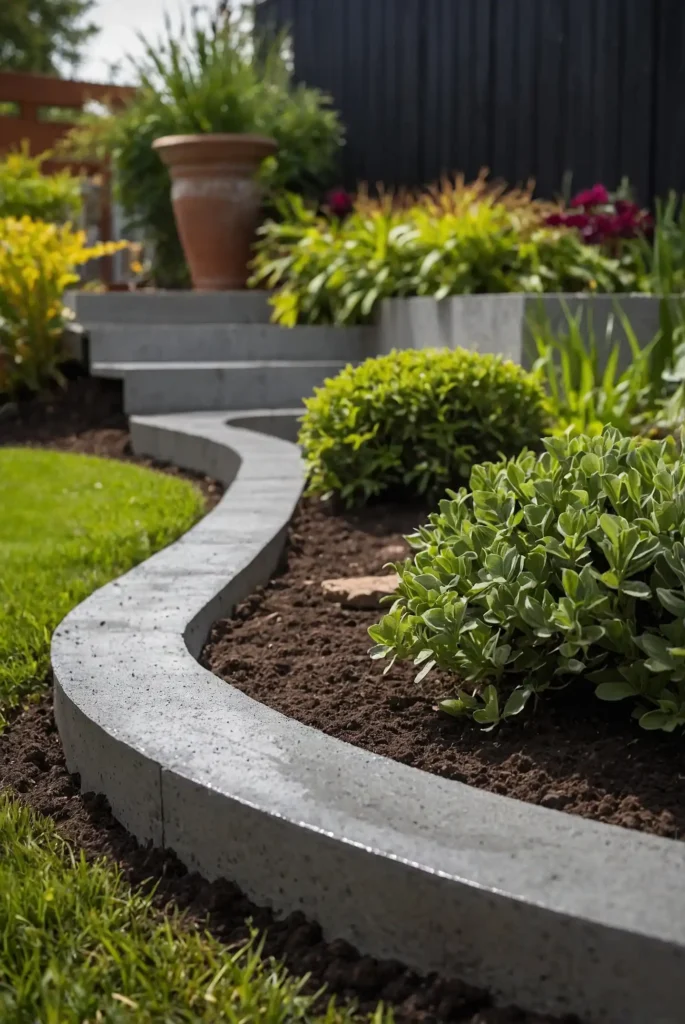
Pour concrete in custom forms to create permanent, weather-resistant edging that matches your specific requirements.
You’ll achieve professional results while controlling exact dimensions and finished appearance completely.
This substantial approach provides excellent longevity while accommodating any shape or curve imaginably.
Your concrete edging creates clean lines that enhance formal garden designs and architectural landscapes.
You can add color, texture, or decorative aggregates to customize the finished appearance perfectly.
18: Oyster Shell Pathways
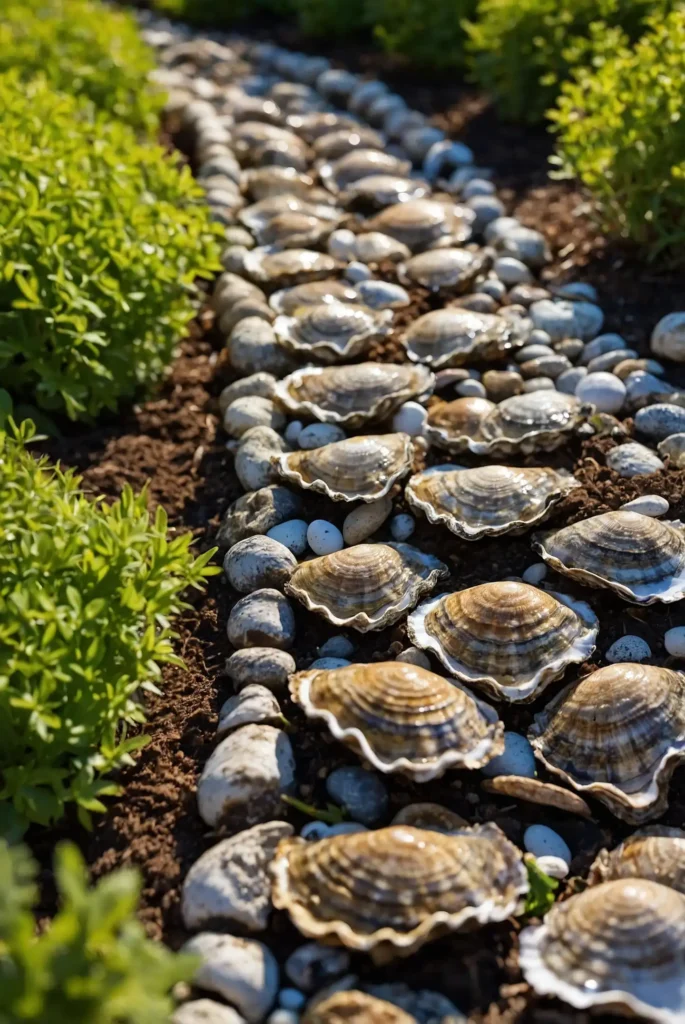
Use crushed oyster shells to create bright, coastal-inspired edging that reflects light beautifully.
You’ll add texture and regional character while providing excellent drainage for adjacent planting areas.
This sustainable option works perfectly for seaside gardens and informal landscape designs.
Your shell edging creates distinctive boundaries while supporting beneficial soil pH for specific plant varieties.
You can source shells locally or purchase them from garden centers and landscape suppliers.
19: Wine Bottle Barriers
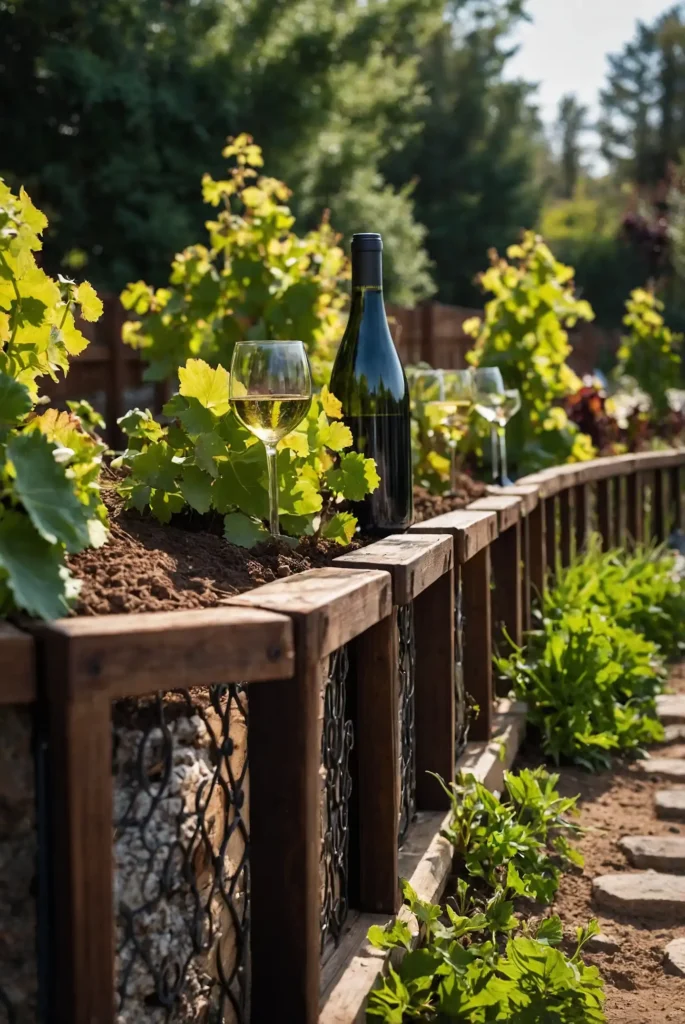
Insert wine bottles neck-down to create colorful, recycled edging that adds personality to garden borders.
You’ll repurpose materials while creating unique boundaries that catch and reflect available sunlight.
This creative approach works well for informal gardens and artistic landscape installations.
Your bottle edging provides conversation starters while demonstrating environmental consciousness and creative recycling practices.
You can collect bottles over time or coordinate with local restaurants for larger supplies.
20: Decorative Gravel Strips
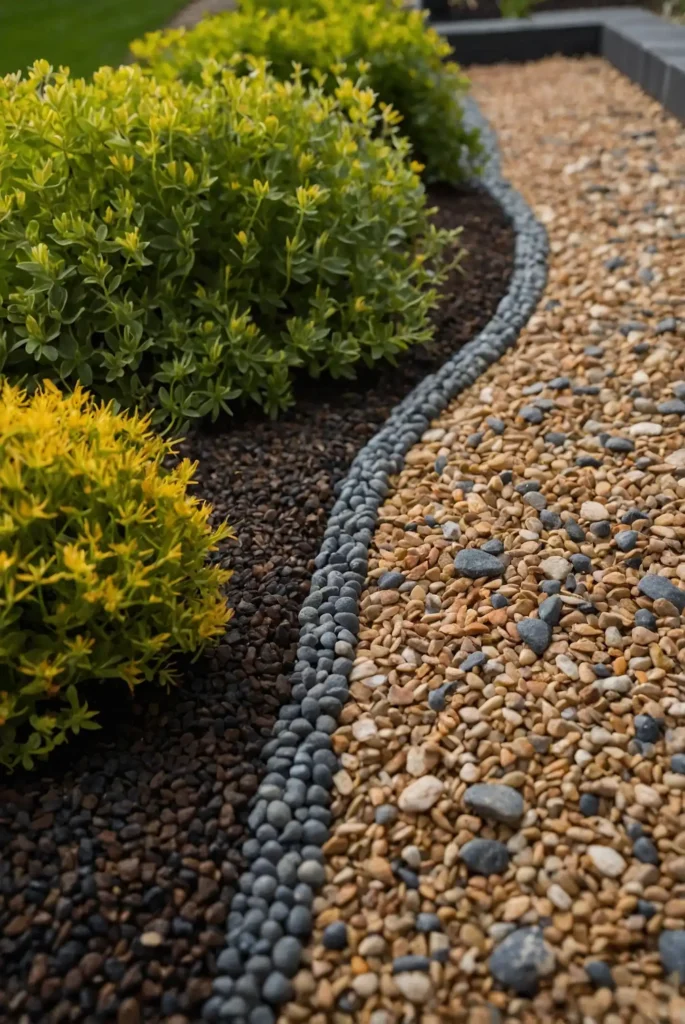
Create defined borders using contrasting gravel colors and textures for low-maintenance garden edging.
You’ll establish clear boundaries while providing excellent drainage and weed suppression benefits.
This practical approach requires minimal installation while offering long-term performance and visual appeal.
Your gravel edging works well with drought-tolerant plants and contemporary landscape designs effectively.
You can choose from numerous colors and sizes to complement your existing landscape materials.
21: Carved Stone Features
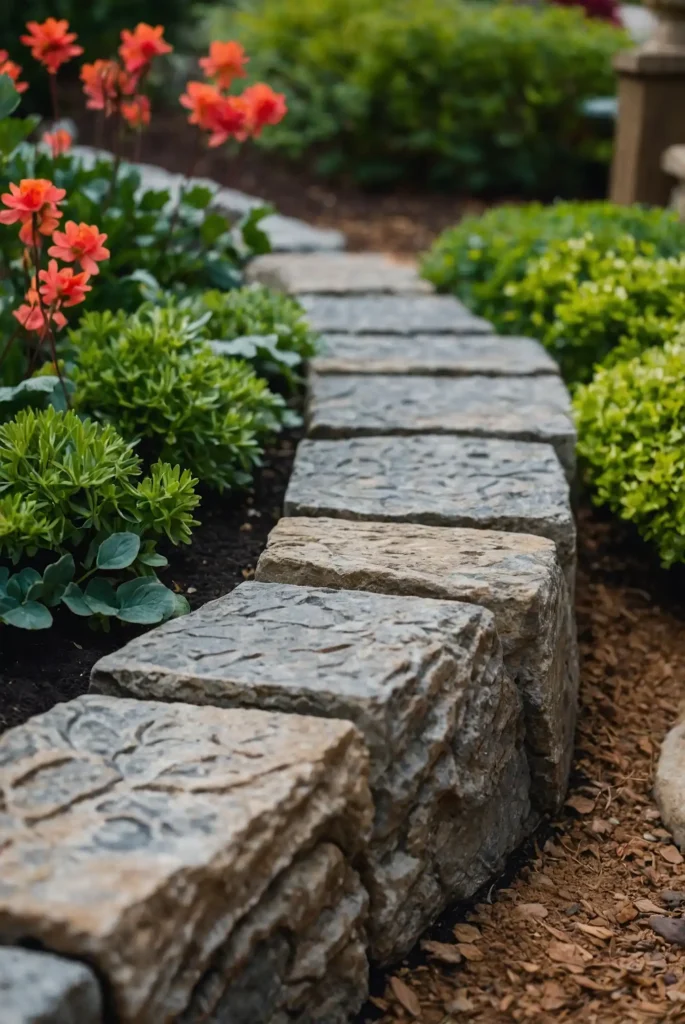
Install hand-carved or molded stone elements for artistic garden edging with historical character.
You’ll create unique boundaries that serve as functional art while adding substantial visual weight.
This investment approach provides heirloom-quality edging that improves with age and weathering.
Your carved stone edging becomes landscape focal points that enhance property value and artistic appeal.
You can commission custom pieces or source antique materials for authentic historical character.
22: Recycled Tire Planters

Cut and arrange old tires to create raised edging that doubles as planting containers.
You’ll repurpose waste materials while creating substantial boundaries with built-in growing space.
This eco-friendly approach works well for vegetable gardens and children’s gardening projects.
Your tire edging provides excellent root depth while demonstrating creative recycling and environmental stewardship.
You can paint tires or leave them natural depending on your desired aesthetic approach.
23: Pressed Concrete Stamps
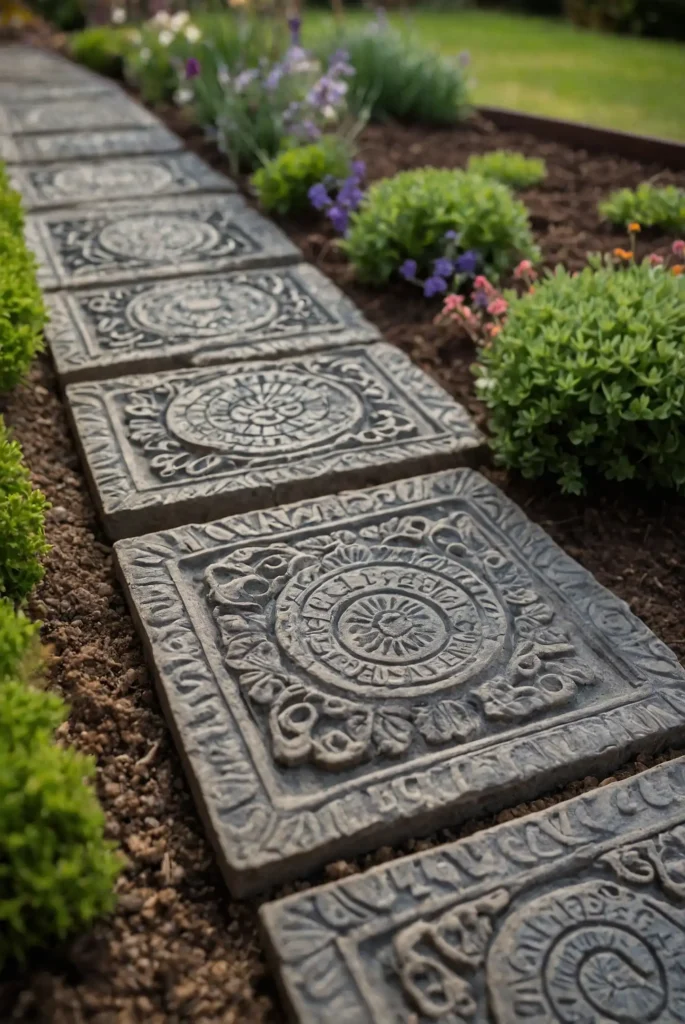
Use decorative stamps on poured concrete to create textured edging that mimics stone or brick.
You’ll achieve expensive-looking results while maintaining budget-friendly installation costs and long-term durability.
This technique provides unlimited design possibilities while ensuring consistent, professional appearance throughout your landscape.
Your stamped edging creates sophisticated boundaries that complement various architectural styles effectively.
You can choose from numerous patterns and colors to match your specific design preferences.
24: Living Succulent Borders
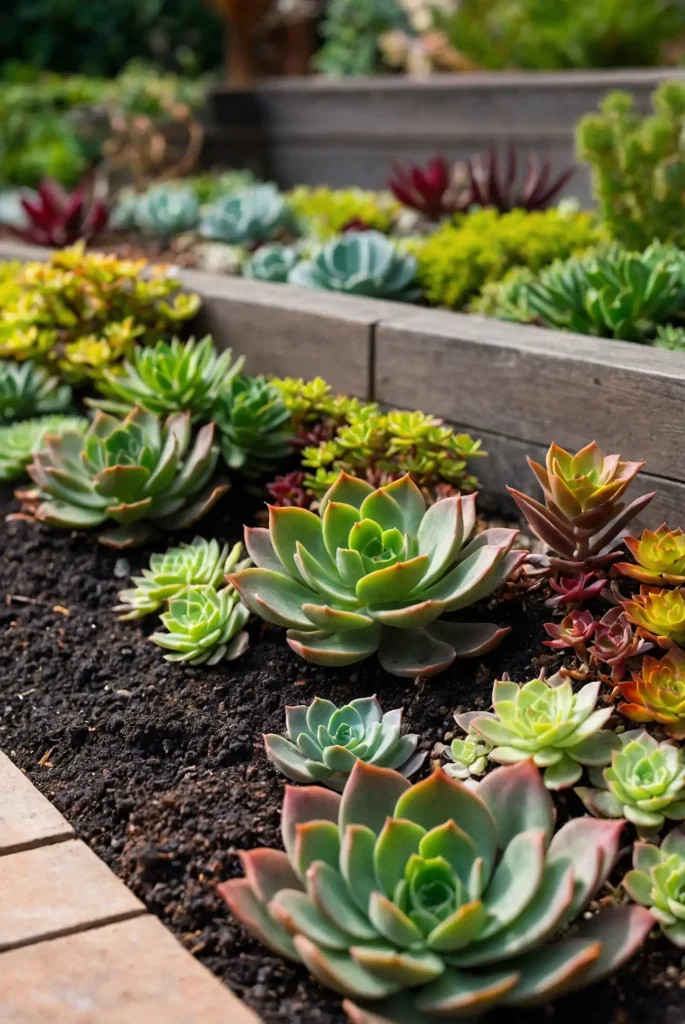
Plant succulent varieties in linear arrangements to create low-maintenance, drought-tolerant garden edging.
You’ll establish living boundaries that provide year-round color while requiring minimal water and care.
This sustainable approach works perfectly for arid climates and water-conscious landscape designs.
Your succulent edging creates interesting textures while supporting environmental conservation and reducing maintenance requirements.
You can choose from countless varieties to create specific color combinations and growth patterns.
25: Copper Pipe Accents

Install copper pipes vertically or horizontally to create elegant, weather-resistant edging that develops attractive patina.
You’ll add metallic accents while establishing durable boundaries that improve with age.
This contemporary approach works beautifully with modern architecture and minimalist garden designs.
Your copper edging creates sophisticated details while providing excellent longevity and distinctive visual character.
You can choose various pipe diameters and installation patterns to achieve different aesthetic effects.
26: Pebble Mosaic Patterns
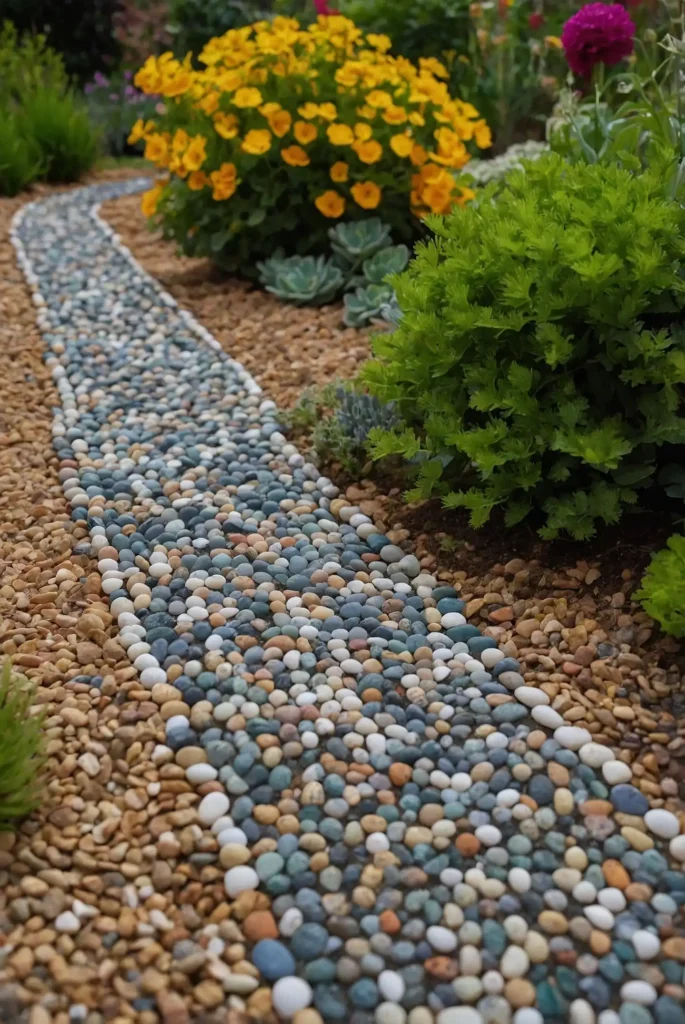
Arrange smooth pebbles in decorative patterns to create artistic edging that adds texture and visual interest.
You’ll design custom boundaries while incorporating natural materials that complement any landscape style.
This meditative installation process creates unique results that reflect your personal creativity and patience.
Your pebble edging provides excellent drainage while adding handcrafted character to garden boundaries.
You can source pebbles from beaches, rivers, or landscape suppliers for different color combinations.
27: Mixed Material Combinations
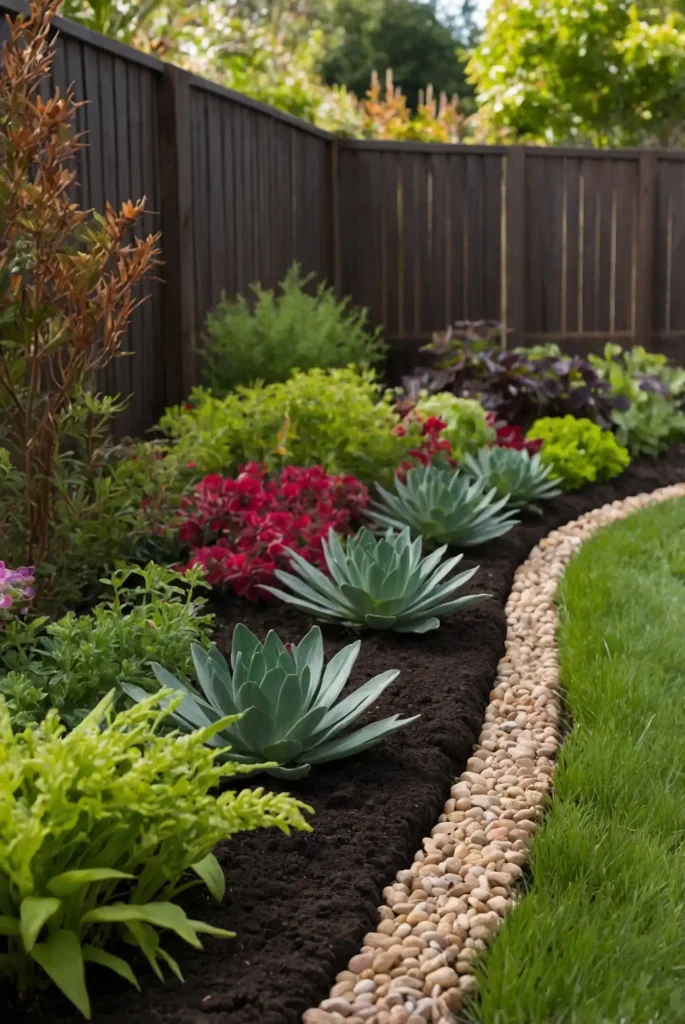
Combine multiple edging materials to create layered, complex boundaries that add depth and visual richness.
You’ll design unique solutions while incorporating various textures, colors, and heights effectively.
This creative approach allows you to use leftover materials while achieving sophisticated, custom results.
Your mixed edging creates distinctive landscape features that reflect personal style and creative problem-solving.
You can experiment with different combinations until you achieve the perfect balance and appearance.
Conclusion
Creative garden edging transforms ordinary landscapes into polished, professional designs that enhance your property’s beauty.
These ideas will help you find the perfect solution for your specific garden needs and style preferences.


